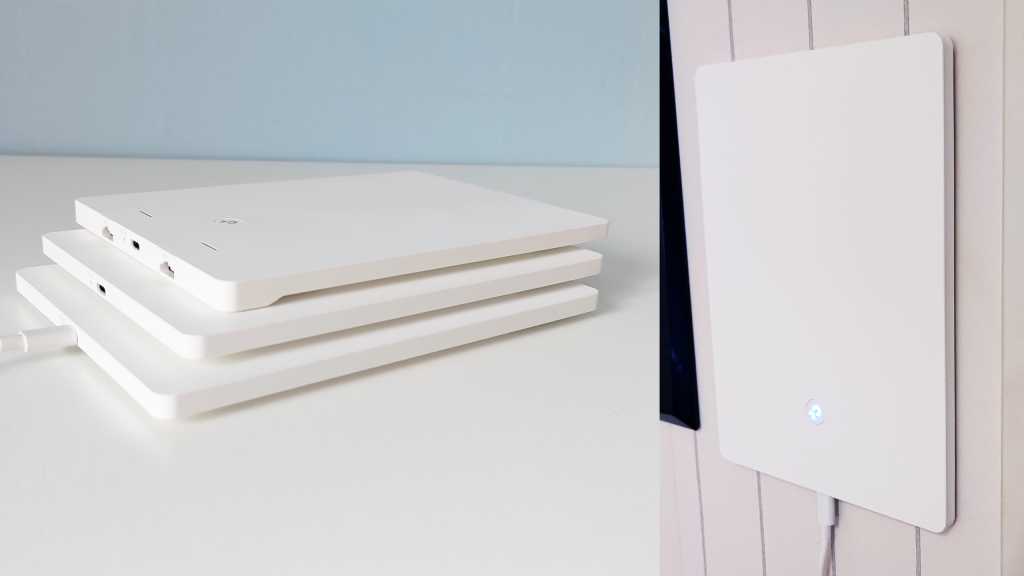Expert’s Rating
Pros
- Stylish and discreet
- Easy to set up
- Good performance
Cons
- Moderate range for Wi-Fi 6
- Only one LAN port
- Unnecessarily short power cables
Our Verdict
If you care about home decor, I highly recommend the Archer Air R5 package. You won’t find a better looking mesh Wi-Fi solution, and it’s just as fast and functional as most mesh packages in its price range. If you need wired network ports, look elsewhere.
When I test routers, I always look to see if there’s an alternative to simply putting them on a table, shelf, or dresser. Is there a better way to mount it, such as hanging it on the wall? I’m looking for screw mounts or mounting kits for that, so that hopefully the unit can be set up neatly. Among standalone routers, this is a common option, but for mesh systems it is rare.
The TP-link Archer Air is an exception. It doesn’t just hang on the wall: it’s built for that, and can’t be placed on a table. When I received the box, I was a little suspicious at first. Is this really all there is? Do the other two units come in separate boxes? But no, it turns out that the three devices in the package are unusually flat, no thicker than a mobile phone, and the size of seven-inch tablets.
There are three Archer Air products, the Archer Air R5 router, the Archer Air E5 Wi-Fi extender, and the new mesh package which I’ve tested here. TP-link also calls it Archer Air R5, but with “3-pack” indicated. It is a package with one Archer Air R5 and two Archer Air E5.
As these were brand new in the UK at the time of review, the 3-pack was impossible to find on sale, but you could buy individual R5 and E5 units. TP-Link says the R5 has an RRP of £140 and the E5 £120. Ebuyer was selling the R5 for £145, and Lambda-tek had the E5 in stock for £127.
TP-Link’s website still lists the devices as “Coming soon” so prices should drop as availability increases, and the 3-pack should become available for less than buying the units individually.
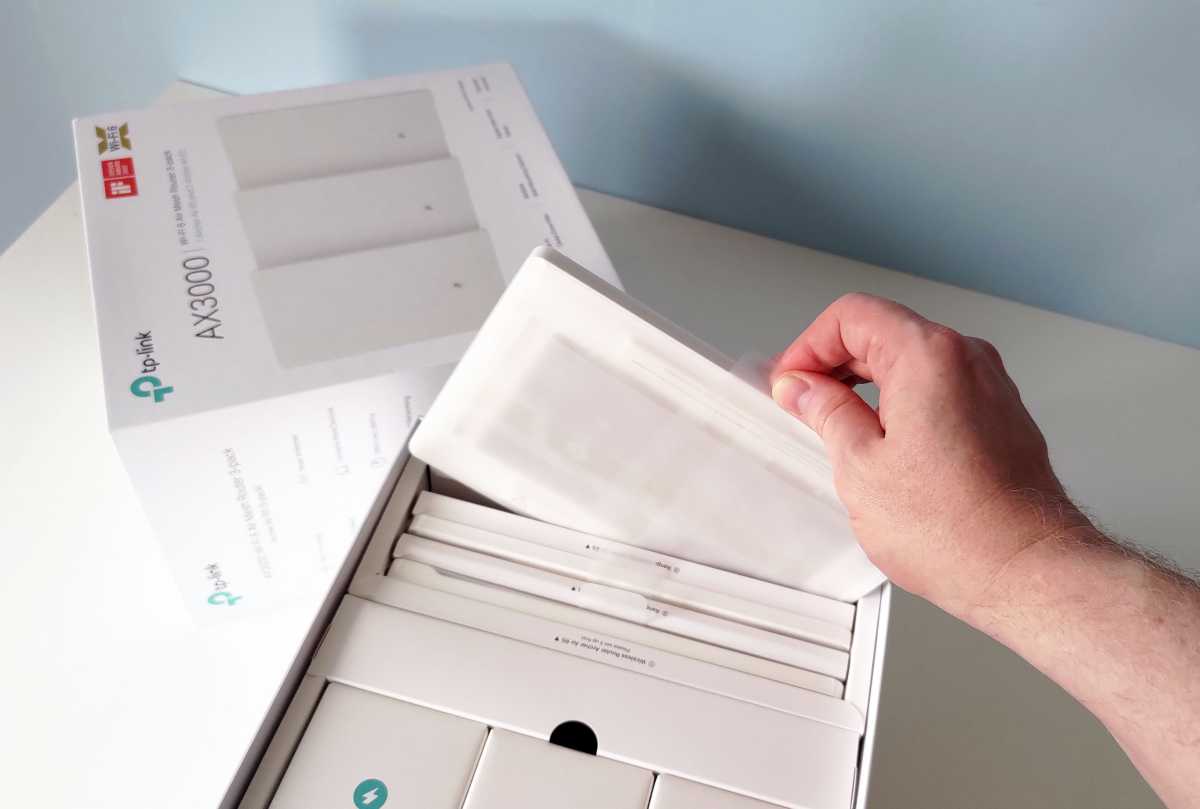
Mattias Inghe
For that you get a Wi-Fi 6 network with two frequency bands and up to about three gigabits in total capacity. Most, about 2 400 Mbit/s, on 5 GHz and the remaining 600 on 2.4 GHz. The 5 GHz band also uses the mesh system as backhaul, communication between the devices. So some of the bandwidth may be taken up, and at the very least you may have a good gigabit for your computers, mobiles and tablets to surf and stream. Often, probably more, but don’t count on it. It’s good enough if you don’t have a broadband connection for more, or have many users who need to send files internally on the network, and absolutely must do so simultaneously.
Easy to connect and set up
It’s a mesh system with the Archer Air R5 as the central unit, but it’s not part of TP-Link’s Deco mesh system. Instead, it uses the cross-platform Easymesh standard to connect the units together. This means that, in theory, you can connect other Easymesh-compatible devices from different manufacturers if you want to expand your network.
The package comes with a wall mount, universal screws for wood and plaster, and concrete wall plugs. You even get three small spirit levels in a bag, to make sure the devices are hung straight and tidy. Why TP-link includes so many, when the same level can be used for all three, is a mystery.
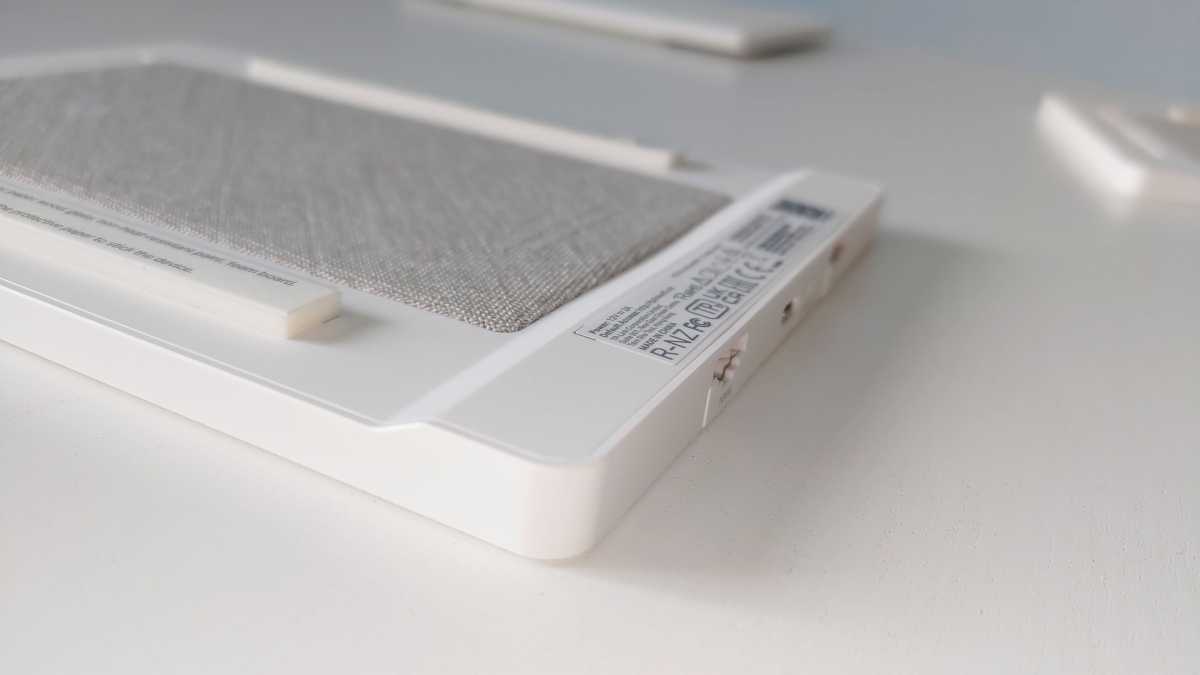
Mattias Inghe
If you don’t want to make such brutal interventions in the walls, you can also use double-sided tape, which is pre-mounted on the back of the units. Just peel off a protective film and stick it to the wall. But you only get one chance to get the measurements right, and then it’s rock solid. When I try to pull it off after my test, I get a couple of strips of wallpaper. Well, no harm done, I had planned to repaint anyway.
The main router R5 has three connections at the bottom, a usb type c for power and two gigabit ethernet ports, one for wan and one for lan. The E5 units have only one type c port. Here you connect the supplied power adapters. Or you can do what I did and realise too late how short the cables from the adapter are, so you have to make a silent curse and find an extension cable for one of them.
Familiar features and interfaces
Be sure to read the installation instructions, too, so you’ll see that you need to plug in the extensions “near the router” first to sync them up to the network, before placing them on the walls of your home. Just switch it on, wait a few minutes and everything is automatically ready.
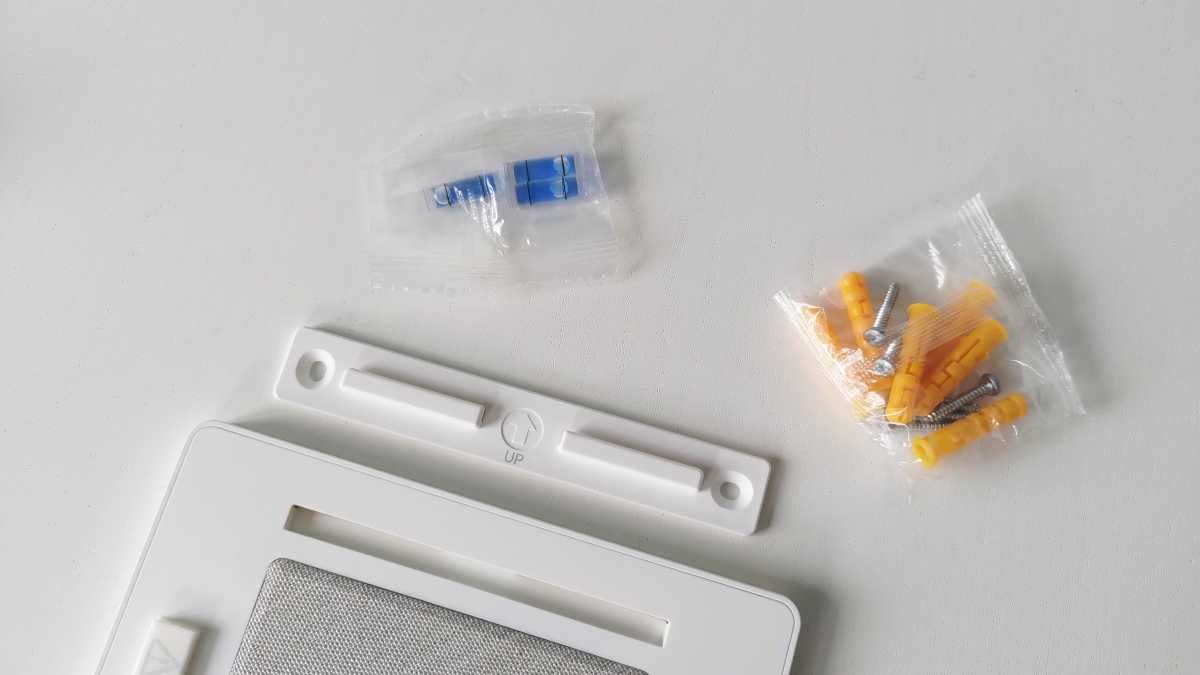
Mattias Inghe
They show up in the Tether admin app as separate devices that you can password and then go in and manage individually. It’s a bit of a hassle that I have to log out of one to log in to the next for certain settings, like checking the devices’ status LEDs. But it’s very rare that I need to access the nodes, so it’s not much extra work. The app gives you good control over access control, basic Wi-Fi security, and features like QoS, guest network, and a simple parental control.
You can access more setting options by logging in with a password you’ve chosen to a web interface. Here you’ll also find things like port control, IPv6 settings and a VPN server. Without a regular USB port, you have to do without things like a file server and printer sharing in the router. What is available, however, is the same paid subscription for the Home Shield Pro service that you can get in most TP-link routers. This includes virus protection, increased intrusion protection, IoT security, and more detailed parental controls.
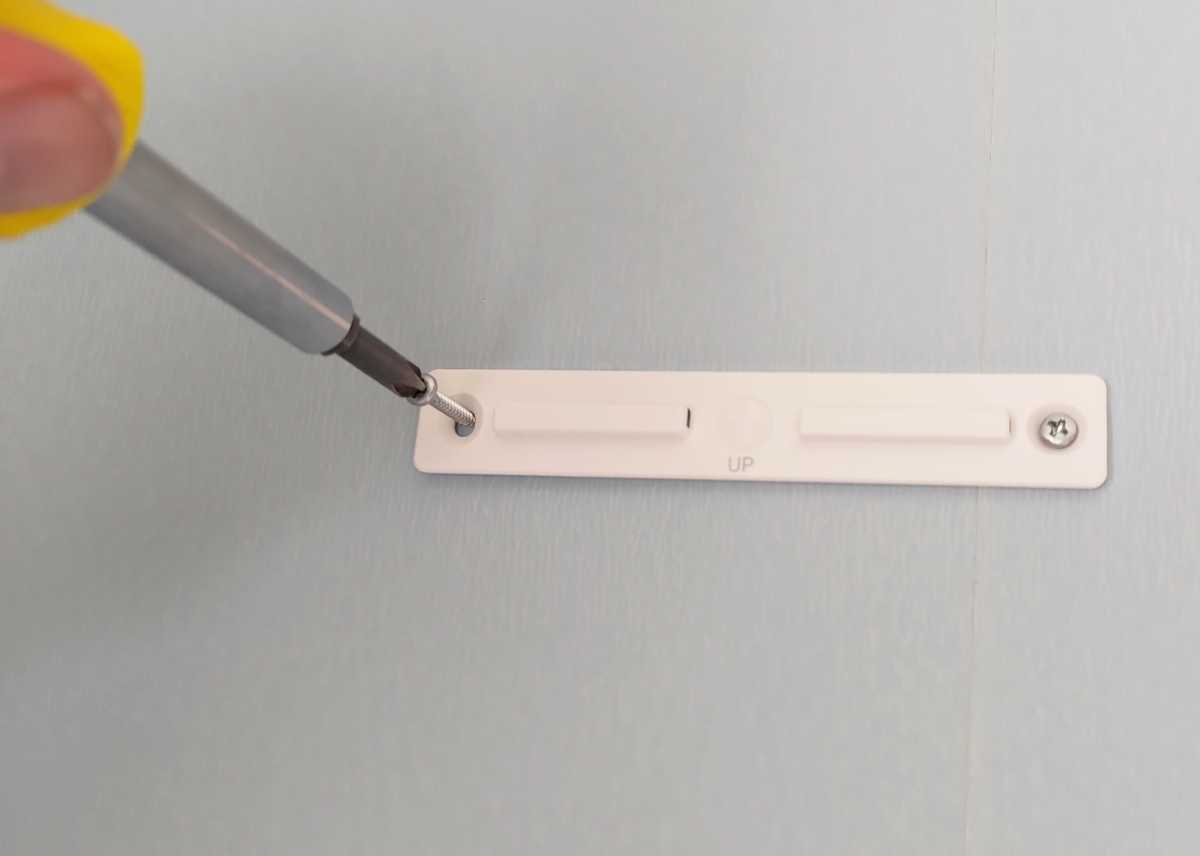
Mattias Inghe
Stable and reasonably fast
The speed over Wi-Fi is not the fastest I’ve seen, but well approved for a Wi-Fi 6 system that is not built for performance maximisation and doesn’t cost the earth. Considering how tightly antennas, processors and other electronics must be placed in the devices, it’s not surprising if you don’t reach gigabit level. In the same room as the main router, I get just over 600 Mbit/s in surfing speed to a computer with Wi-Fi 6. In the next room, the speed drops to 410 Mbit/s.
The range is acceptable, if not fantastic. With the goal of always having 200 Mbit/s surfing speed, I can place an extender about 30 metres away with a clear view, and about 19 metres away with a single wall in between. You should probably test your E5 nodes before going all-in and screwing or gluing them to the walls to ensure you get the best possible coverage.
Plan carefully, and place the nodes thoughtfully, and you can have a fast, flexible and very attractive home networking solution. What can cause problems is if you need to connect a desktop computer or something similar that does not have Wi-Fi. You will have to solve this in another way, with a Wi-Fi adapter for the computer or with a bridge.
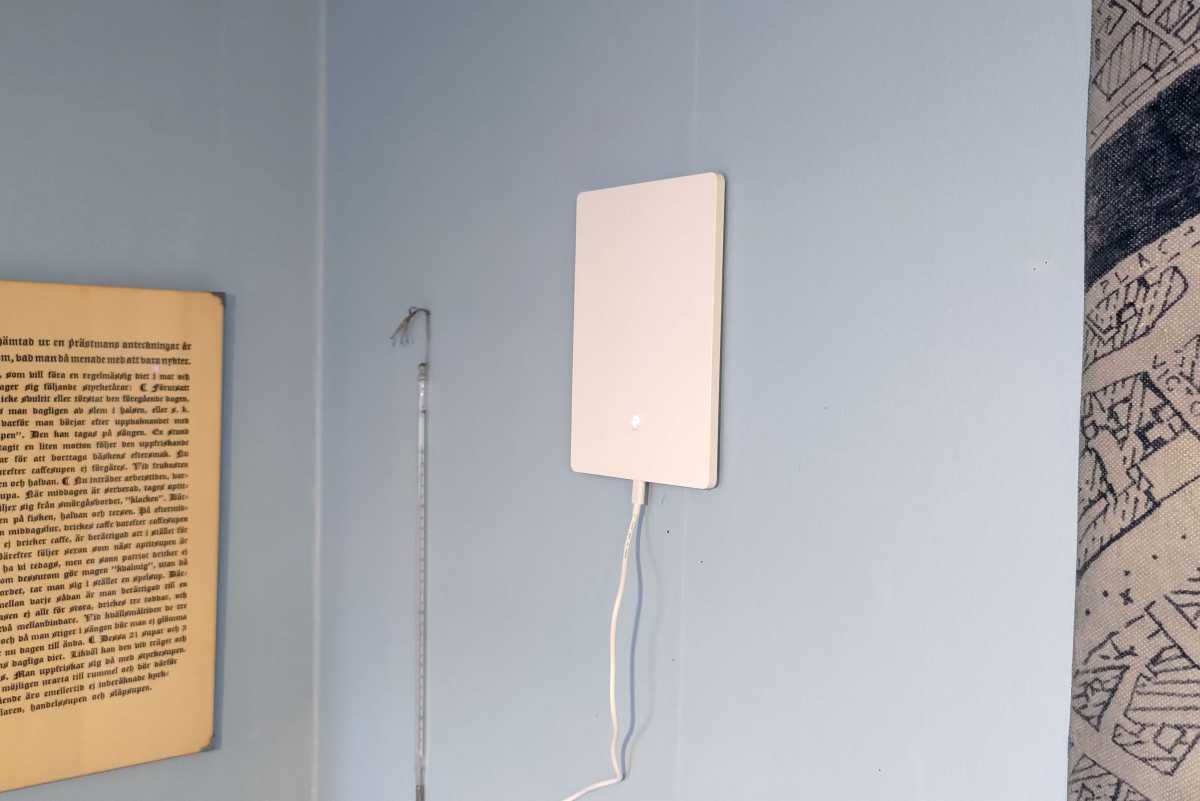
Mattias Inghe
Specifications
- Product name: TP-link Archer Air R5 Mesh (3-pack)
- Devices: Archer Air R5 + 2pcs E5
- Wireless protocols: Wifi 6 + EasyMesh
- Frequency band: 2,4 GHz + 5 GHz
- Wi-Fi capacity: 574 + 2403 Mbit/s
- Connections, router: Gigabit ethernet wan, gigabit ethernet lan
- Wireless security: Wpa, wpa2, wpa3
- Speed, 3m to wifi client: 633 Mbit/s (5 GHz wifi 6)
- Range per device*: 19 metres
- File server/write server: No/no
- Other: Guest network, parental control, QoS, IoT network, security+ (virus protection and extended intrusion protection) as an option.
- User interface: Web, app
- Remote administration: Via app
- Size per unit including antennas: 15 x 21.1 x 0.8 cm
* Longest distance, including two internal walls, where a new mesh node is needed to maintain a speed of at least 200 Mbit/s.
This review originally appeared on M3.se.
